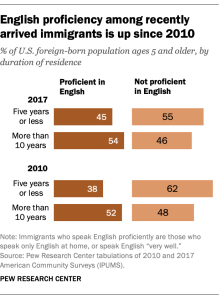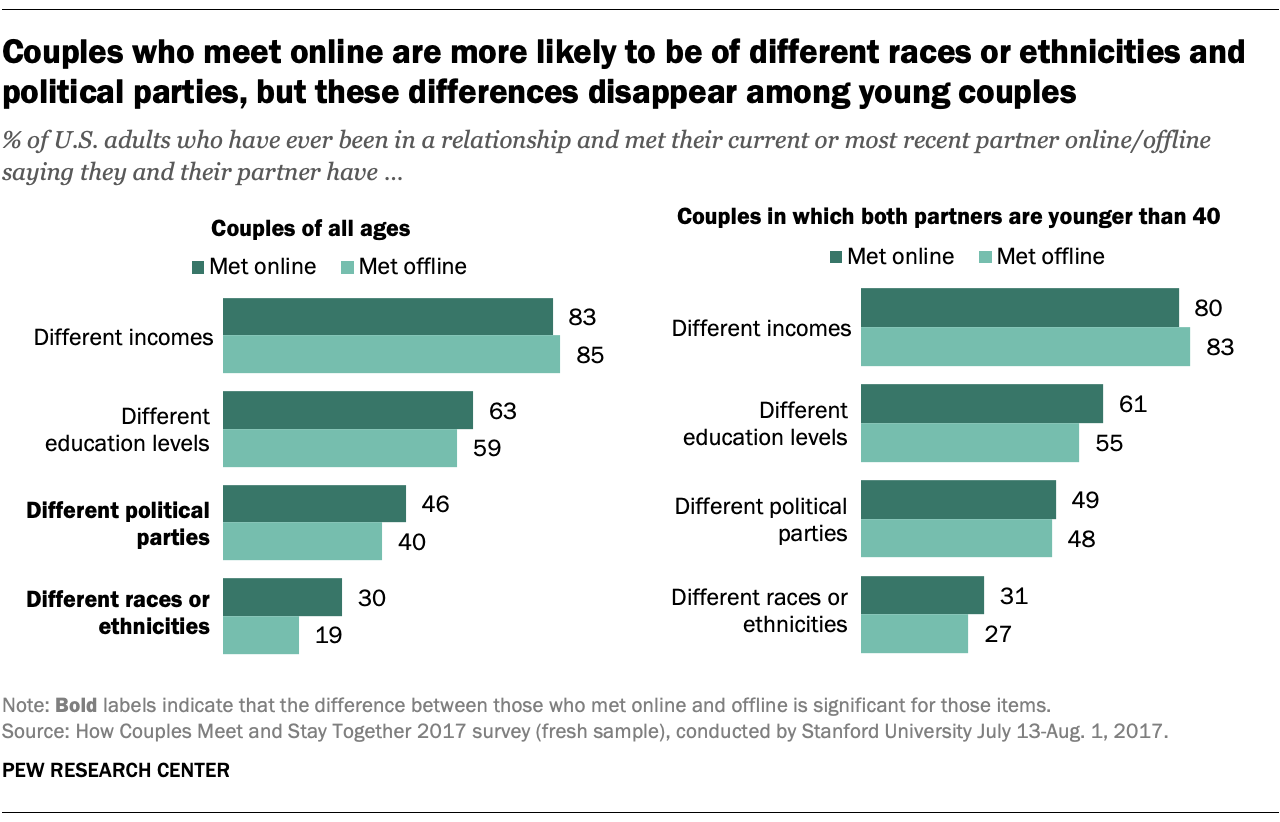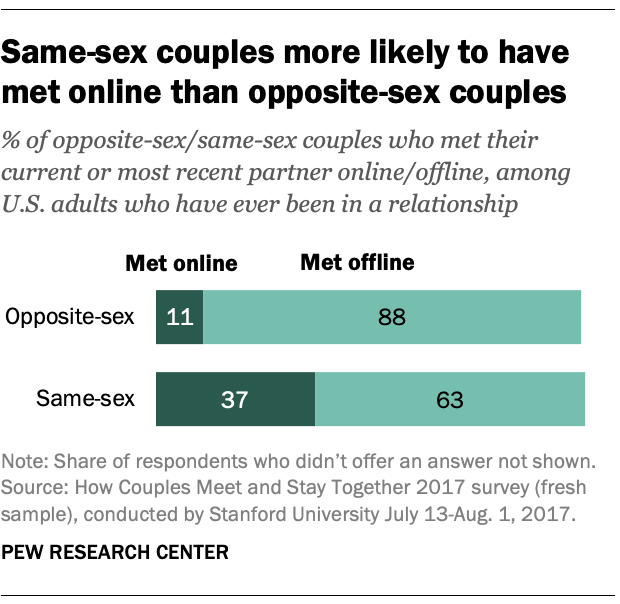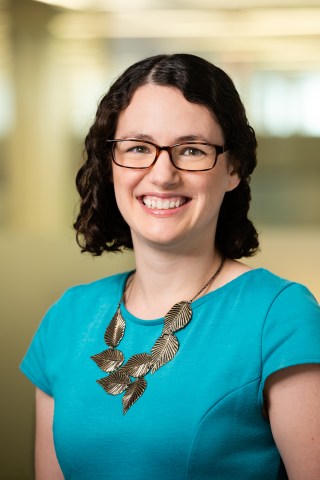

As online dating has increased in popularity and lost much of its stigma over the past few decades, researchers have speculated that it could change the landscape of dating – and perhaps marriage – in big ways. By providing ways to meet others they wouldn’t bump into in their day-to-day lives, has online dating made its users more likely to choose a partner who is different from them in race or ethnicity, education, political party or income?
A Pew Research Center analysis of recently released survey data from Stanford University finds that couples who meet online are, in fact, more likely to be diverse in some of these dimensions. But this can be explained by the fact that online daters tend to be younger than those who meet offline, and younger people are more likely to be in relationships with people who are different from them, regardless of how they meet.
In the Stanford study (which included 3,394 U.S. adults who are currently married, in a relationship or who have ever previously been in a relationship), the median age of people who met their partners online was 36, compared with 51 among those who met their partners in another way.

Three-in-ten of those who say they met their partner online report that their partner is a different race or ethnicity, compared with 19% of those who met their partner offline. People who met their partner online are also somewhat more likely to say that they and their partner do not identify with the same political party (46% vs. 40%). Of those who say their partner has a different political affiliation, many are in a couple where one person leans to or is affiliated with one party and the other is a political independent or undecided. Meanwhile, there are no significant differences in educational attainment or income between couples who met online and offline.
But after controlling for age, these differences disappear. Looking only at Americans younger than 40, similar shares of those who met their partner online (49%) and offline (48%) say their partner identifies with a different political party. Similar shares (31% and 27%, respectively) say their partner is of a different race or ethnicity. The shares saying they have a different income or education level from their partner are also not significantly different between those who met online and offline.

Previous research suggests that populations with small pools of potential partners – such as people seeking a same-sex partner – are most likely to meet a partner online. The Pew Research Center analysis bears this out. Roughly four-in-ten people in same-sex relationships (37%) report meeting their partner online, compared with only 11% of opposite-sex couples. These differences remain after taking age into account.
People who met their partner online are more likely than those who met offline to identify as lesbian, gay or bisexual (13% of those who met their partner online say they are LGB vs. 4% of those who met their partner offline). This difference is similar among those younger than 40.
Among people who met online, 36% had been married before they met their current or most recent partner, compared with 26% of those who met offline. Among people younger than 40, though, there were no significant differences between those who met online and offline in the share that were previously married.
Note: All shares are based on those who are currently married or in a relationship or who have ever been in a relationship, in which case respondents were asked about their most recent partner. Both opposite-sex and same-sex couples are included. People who met their partners online include those who met through dating sites and apps, as well as those who met through the internet in other ways, such as online classifieds or social media. For more information, see methodology.
